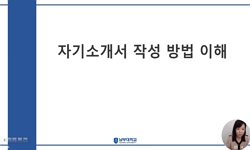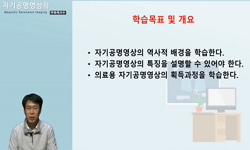This study targeting the porcelain excavated from the tomb of Korea, Chosun era surveyed in Kimhae area, KyungNam Province, its objective is to establish the recording chronologically through the analysis for the attribute and the classification of fo...
http://chineseinput.net/에서 pinyin(병음)방식으로 중국어를 변환할 수 있습니다.
변환된 중국어를 복사하여 사용하시면 됩니다.
- 中文 을 입력하시려면 zhongwen을 입력하시고 space를누르시면됩니다.
- 北京 을 입력하시려면 beijing을 입력하시고 space를 누르시면 됩니다.
경남 김해지역 분묘출토 자기 연구 = The Study for excavated porcelain from the tomb in Kimhae area, KyungNam Province
한글로보기https://www.riss.kr/link?id=T13121626
- 저자
-
발행사항
창원 : 경남대학교 대학원, 2013
-
학위논문사항
학위논문(석사)-- 경남대학교 대학원 : 사학과 2013. 2
-
발행연도
2013
-
작성언어
한국어
- 주제어
-
발행국(도시)
경상남도
-
형태사항
111 p. ; 26cm
-
일반주기명
지도교수:이지우
- 소장기관
-
0
상세조회 -
0
다운로드
부가정보
다국어 초록 (Multilingual Abstract)
This study targeting the porcelain excavated from the tomb of Korea, Chosun era surveyed in Kimhae area, KyungNam Province, its objective is to establish the recording chronologically through the analysis for the attribute and the classification of formality.
The comprehensive analysis and investigation for Kimhae area are easy as the data for the remains of tombs and the excavated antiquity are being accumulated constantly through the existing survey for the excavation survey. The meaning capable of accumulating the data may be granted from an angle of history for the local porcelain in the area where there is no result of study at all. The analysis targeting 16 remains of tombs in Korea, Chosun era has been carried out, first, the characteristic of remains has been checked through the form of tombs, the location of burial, the act of formality, etc. The concept of type used with mixed without the criteria in the excavated remains has been clarified and the classification of form by dividing the dishes of bon and wan according to the times has been tried. The aspect of change and the recording chronologically for the excavated porcelains from the tombs have been established through this.
The majority of tombs of wooden coffin are found in the tombs of Korea era. The tombs of wooden coffin comprise a majority in Korea era, the burial location of porcelains has been highly inclined to be divided into two places. There had been many cases of burial of the porcelains in the side except of the central part together with the copper spoon. The tombs of wooden coffin comprise the majority in the tombs of Chosum era. The tabernacles in comparatively many tombs are identified and there are many cases that the grave goods (a dead person’s belongings buried with his corpse) in the tabernacle is excavated. Many burial location of porcelain kinds found to be in one part different from the Korea era. The characteristics of the burial of porcelains and its location, the arrangement of articles, etc. is different by era in the tombs of Korea, Chosun era like this.
The classification of form and the arrangement order in the excavated porcelains of tombs had been progressed by separating the celadon, the grayish-blue-powered celadon and the white porcelains. The aspect of change by the stage of 1 to 5 according to the era and the kinds is found to be identified, the study for the recording chronologically in the Youngnam district as the center and the era by each stage based on its results has been identified. The all excavated celadon has been applied in the 1st stage. The recording chronologically has been arranged between the first half of 12 century and 13 century in light of the fact based on the antiquity of early times such as hill of solar halo sleeve are not observed and the excavation of important dishes. 2, 3 stage are the stages the grayish-blue-powered celadon are appeared 2, 3 stage. the fuselage are tingled with the form of curved important dishes, the technique of the print, the inlaid work, the paste brush, etc. are observed in the stage 2 also, the meaning of uncertain showing the engraved X letter well written of public imposts Gong letter, Kimhae Jangheung storage purpose is identified.
The development period of the grayish-blue-powered celadon (about 1432 ~ 1469), 15 century are seen through the external form of the design, the inscription, the kinds. The stage 3 is tingled with the fuselage, the technique of the paste brush comprise the majority. The period of change, decline (about 1469~1510)has been applied in the end of 15 century of the recording chronologically. 4, 5 stage are the stages the white celadon is appeared. 4 stage are applied in the end of 15 century ~ 16 century, it is understood that there is no difference of period mainly. Also, the antiquity engraved with the letter “Kwa” and “Kwabang” is identified. The antiquity engraved with the stipple method showing “Kimhae Upper, Middle” in the stage 5. It is understood middle of 16 century ~ 17 century through the aspect of deformity, poetry and prose well written.
After considering all the factor, the fact has revealed that tombs excavated from the Korea, Chosun era were generally grouped in a certain area. Also through the fact that porcelain was used as daily or grave goods, the dead were seemed to be people who had financial power or were dominant classes. Porcelain excavated from tombs seems that there are not specific ceramic culture in terms of types or malformation morphologically in Yeongnam area. However, from the cases that it was observed inscription like name of area was engraved on the white porcelain and grayish-blue-powered celadon, and gwiyal was ordered in the area near Japan, it can be estimated that there were their own base and a process of development.
국문 초록 (Abstract)
본 연구는 경남 김해지역에서 조사 된 고려·조선시대 분묘 출토 磁器를 대상으로 하며, 속성분석 및 형식분류를 통해 편년을 설정하는데 목적을 두고 있다. 김해지역은 기존의 발굴조사�...
본 연구는 경남 김해지역에서 조사 된 고려·조선시대 분묘 출토 磁器를 대상으로 하며, 속성분석 및 형식분류를 통해 편년을 설정하는데 목적을 두고 있다.
김해지역은 기존의 발굴조사를 통해 분묘유적과 출토유물에 대한 자료가 꾸준히 축적되어있어 종합적인 분석 및 검토가 용이하다. 그리고 연구 성과가 부족한 지역에 대한 기초자료 및 연구성과를 확보하는 의미가 있다. 분석은 김해지역 고려·조선시대 분묘유적 16개소를 대상으로 실시하였다. 먼저 분묘의 형식, 유물의 부장위치, 의례행위 등을 통해 유구의 특징을 살펴보았다. 또한 器種의 개념을 명확하게 정리하고 시대에 따라 鉢·碗·접시로 구분하여 형식분류를 시도하였다.
고려시대 분묘는 목관묘가 다수를 차지하며, 자기류는 두 곳에 나누어 부장하는 경향이 높다. 磁器는 중앙부를 제외한 측면에, 銅匙와 함께 부장하는 경우가 많다. 조선시대 분묘도 목관묘가 대부분을 차지하며, 비교적 많은 묘에서 감실이 확인된다. 감실 내에서 부장품이 출토되는 경우가 많다. 자기류의 부장은 한 곳에만 시행한 것이 많다. 이와 같이 고려·조선시대 분묘는 자기류의 부장과 위치, 器物配置 등이 시대에 따라 조금씩 다름을 알 수 있다.
분묘 출토 자기는 청자·분청사기·백자로 구분되며, 각각 형식분류 및 순서배열을 진행하였다. 시대와 器種에 따라 Ι~Ⅴ단계로 변화가 확인되며, 영남지방을 중심으로 한 편년연구 및 성과를 바탕으로 각 단계별로 연대를 비정하였다. Ⅰ단계는 출토된 청자 모두가 해당된다. 해무리굽 완과 같은 이른 시기의 유물이 관찰되지 않고 후기의 절요접시가 출토되는 점 등을 통해 12세기 전반~13세기로 편년하였다. Ⅱ·Ⅲ단계는 분청사기가 출현하는 단계이다. Ⅱ단계는 동체부가 곡선·절요의 형태를 띠고, 인화·상감·귀얄 등의 기법이 관찰된다. 또한 의미가 불분명한 ‘X’字·공납용임을 말해주는 ‘公’字·‘金海+長興庫用’字가 새겨진 명문이 확인된다. 문양 및 명문·기종의 외형적인 형식을 통해 분청사기 발전기(1432년~1469년경)인 15세기 중반으로 설정하였다. Ⅲ단계는 동체부가 직선적인 형태를 띠며, 대부분 귀얄기법이 사용되었다. 분청사기의 변화·쇠퇴기(1469년~1510년경)인 15세기 말로 편년하였다. Ⅳ·Ⅴ단계는 백자가 출현하는 단계이다. Ⅳ단계는 15세기 말~16세기에 해당되며, Ⅲ단계와 크게 시기차이를 가지지는 않는 것으로 파악된다. 또한 ‘果’字와 ‘果方’字가 陰刻으로 새겨진 유물이 확인된다. Ⅴ단계에는 ‘金海上·中’字가 點刻으로 새겨진 유물이 확인되며, 기형 및 명문의 시문 양상을 통해 16세기 중반~17세기로 파악하였다.
종합해 살펴보면, 자기가 출토되는 고려·조선시대 분묘는 완만한 사면부에 등고선과 직교하는 형태로 상호간의 중복관계 없이 조성되었다. 이는 집단의 공동묘역으로 이전에 조성된 분묘를 인지한 상태에서 후대의 분묘가 조성되었음을 알 수 있다. 또한 자기는 피장자가 일상생활 및 부장유물로 이용할 수 있는 경제력·사회적 위치에 있었음 증명하는 유물이다. 이러한 양상을 통해 피장자는 경제력이 있는 양인 혹은 양반이상의 계층으로 볼 수 있다. 분묘출토 자기는 기종이나 기형을 통해 영남지방 내에서 특별히 다른 도자문화를 가지지 않았던 것으로 판단된다. 그러나 분청사기와 백자에 지역명을 새긴 명문이 확인되고, 인접한 일본에서 귀얄 분청사기를 주문했다는 점 등을 통해 김해지역 내에서의 자체적인 기반과 발전과정이 있었던 것으로 추정된다.
목차 (Table of Contents)
- 국문요약
- Ⅰ. 머리말 = 1
- 1. 先行硏究의 檢討 = 1
- 2. 硏究對象과 方法 = 5
- Ⅱ. 磁器 出土 墳墓遺蹟 槪觀 = 7
- 국문요약
- Ⅰ. 머리말 = 1
- 1. 先行硏究의 檢討 = 1
- 2. 硏究對象과 方法 = 5
- Ⅱ. 磁器 出土 墳墓遺蹟 槪觀 = 7
- Ⅲ. 對象 墳墓의 檢討 = 11
- 1. 고려시대 = 11
- 2. 조선시대 = 20
- Ⅳ. 분묘출토 자기류에 대한 분석 = 30
- 1. 기종의 분류기준 = 30
- 2. 속성분석의 기준 = 31
- 3. 유물의 시대별 형식설정 = 33
- 1) 고려시대 = 34
- 2) 조선시대 = 40
- 4. 명문자기에 대한 검토 = 55
- Ⅴ. 시기성과 지역성 = 61
- 1. 시기성 = 61
- 2. 지역성 = 70
- Ⅵ. 맺음말 = 77
- 참고문헌 = 79
- ABSTRACT = 109












